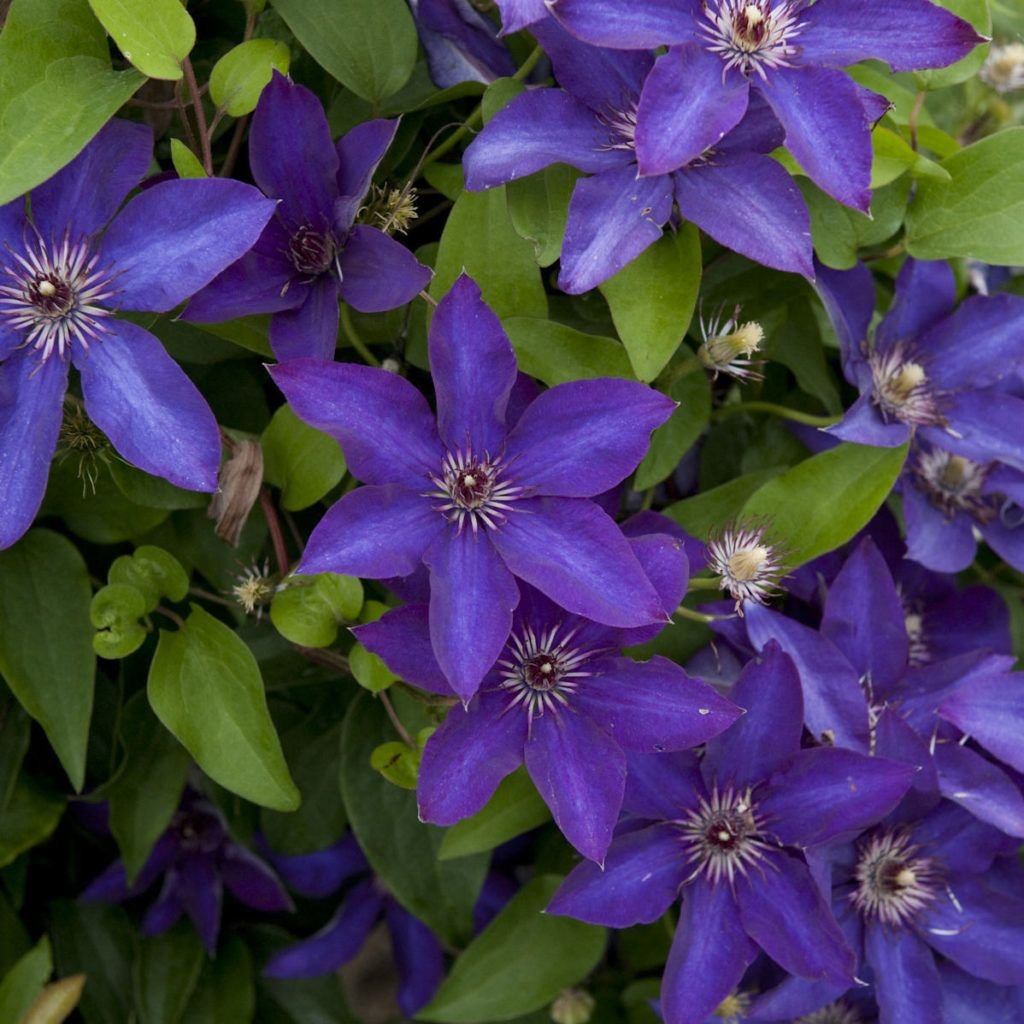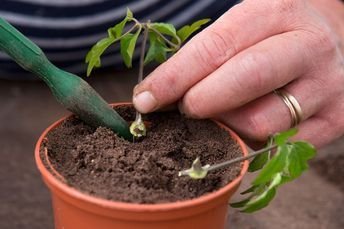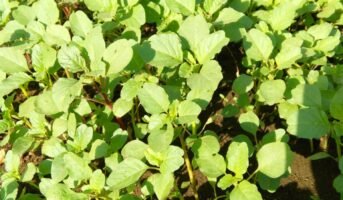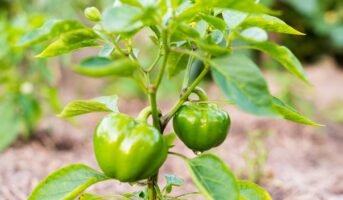Among all flowering vines, clematis is one of the most beautiful and astounding. They are a collection of primarily woody, deciduous vines, except for Armand’s clematis (Clematis armandii), which is evergreen, and a few herbaceous perennials. The flower’s shape, colour, bloom period, leaf effect, and plant height all exhibit a considerable deal of variation.
Clematis: Quick facts
| Scientific Name | Clematis |
| Family | Buttercup family, Ranunculaceae |
| Common Name | Woodbine (Clematis virginiana), Traveller’s joy, or old-man’s-beard (C. vitalba), Virgin’s bower (C. cirrhosa) and Vine bower (C. viticella) |
| Native | Most regions of North America, from northwest Canada to Baja California and from Florida to Nova Scotia, although the majority of species are clustered in the East and Northwest. |
| Plant Type | Perennial |
| Light | Full sun |
| Height and Width | Between 75 cm and 1.5 m tall, with a spread of less than 1m |
| Flower Colour | Purple, blue, pink, white, red, and bi-colour |
| Foliage Colour | Green and lush |
| Blooming Time | Early and mid-summer |
| Propagation | Division, Seed, Layering, Grafting, Cuttings |
| Maintenance | Low maintenance except for watering |

Source: Pinterest
Clematis: How to grow?
Planting
Clematis needs at least six hours of direct sunlight each day to blossom well. However, the delicate roots of plants cannot withstand the heat; use mulch, low-growing plants, and ground cover to keep plant roots cool and moist. Before planting, add some bone meal and compost to the soil, which needs to be loose, well-draining, and have a moderate pH.
Planting in the cool spring often yields better results than planting in the fall.
Clematis in pots can be planted at any time between the last spring frost and the first fall frost.
How to plant Clematis?
- Create a planting hole that is a couple of inches deeper and around two to three times the width of the root ball.
- The crown of the plant, which is where the stem and roots converge, needs to be around 4 inches below the soil’s surface to keep cool. This will promote subsurface branching and stem growth.
- To keep the roots cool and weed growth to a minimum, fill in with soil, properly water it, and mulch.
- If using, place the climbing structure.

Source: Pinterest
Clematis: Care tips
Sunlight
Full sun is ideal for blooming clematis. Some cultivars, including “Nelly Moser,” can flower in partial shade, although the quantity of flowering will be diminished. In hot summer climates, midday shade will be beneficial to clematis.
Soil
The ideal soil for clematis is moist, well-drained, and neutral to slightly alkaline in pH. To maintain a moderate pH in locations with acidic soils, use lime regularly. Because clematis is prone to stem wilt, the soil must be both moist and well-drained.
Watering
Maintain continuous moisture in the soil, but make sure it is well-drained to avoid encouraging wilt disease. In the first year, pay particular attention to watering. During a hot summertime, avoid letting the soil dry out. Clematis are more tolerant of infrequent watering once they have grown.
Fertilising
Clematis are heavy feeders. At planting time, add compost to the soil. Around the base of the vines, spread a layer of compost 1 to 2 inches thick and a balanced organic fertiliser with a 3-1-2 ratio of nitrogen, phosphorus, and potassium every spring. Side dress again in early summer.
Planting
Clematis can be planted in the spring or fall. Summer is a good time to plant, particularly in the North, but remember to maintain the fresh transplants well-watered and weeded.
Mulching
To keep the soil moist and stop weed growth, clematis should be mulched every year in the spring. To prevent the wilt disease, cover the stems with an organic mulch, such as bark mulch, but keep it 6 to 12 inches away.
Trimming & pruning
Clematis that bloom in the spring and early summer should be deadheaded after flowering to promote the development of even more flowers the following year or even later in the summer. Varieties that bloom in the late summer and fall don’t require deadheading. The delicate seed heads offer beauty to the garden in the fall and winter.
Pruning should be done annually on any vining clematis. Since the type of clematis you are cultivating determines how to prune it, pruning clematis can be complicated. Whenever possible, throughout the growing season, remove all damaged, dead, and diseased stems. Before pruning in the spring, wait until it is obvious which stems are alive and which are dead. Pruning should be done based on the bloom time.
Requirements
Although clematis can thrive in a variety of soil types, they prefer deep, fertile soil that is damp but well-drained. Before planting, work in some organic matter, such as leaf mould or well-rotted manure, to improve the structure of heavy or sandy soils.
Growth rate
Once they are established, clematis can grow quite quickly. The rate of growth varies depending on the variety, but the plants have been known to reach heights of up to 20 feet in a single year!
Clematis: Uses
- Traditional Chinese medicine has used clematis for thousands of years as a botanical source for a variety of pharmaceutically useful components.
- Some Clematis species’ stems, rhizomes, and roots are used to ease pain, clear blocked channels, and remove wind-damp.
- To treat syphilis, gout, rheumatism (joint pain), headaches, fluid retention, varicose veins, bone abnormalities, chronic skin conditions, as a diuretic, and many other purposes, there is no good scientific evidence to support any use.
- Clematis is used as a poultice to cure ulcers and purulent wounds in traditional medicine, as well as topically to treat blisters.
Clematis: Toxicity
Both the leaves and the blossoms of clematis are toxic to both children and adults. The natural curiosity in children is to blame for the majority of poisoning incidents with humans. Call the doctor straight away if you think your child may have accidentally eaten some of the clematises.
FAQs
Is clematis challenging to grow?
Because they are tenacious climbers and the majority are entirely hardy and tolerant of a variety of soil types and environmental factors, clematis is easy to grow in many ways. Clematis require yearly pruning, which makes them a little challenging to grow.
Does clematis grow in India?
Indian clematis grows between 100 to 1800 metres above sea level in the Himalayas and Western Ghats.
Housing News Desk is the news desk of leading online real estate portal, Housing.com. Housing News Desk focuses on a variety of topics such as real estate laws, taxes, current news, property trends, home loans, rentals, décor, green homes, home improvement, etc. The main objective of the news desk, is to cover the real estate sector from the perspective of providing information that is useful to the end-user.
Facebook: https://www.facebook.com/housing.com/
Twitter: https://twitter.com/Housing
Email: editor@housing.com












